by Emily E. Hogstad
For generations after the invention of the instruments, the violin was widely considered to be a masculine instrument.
Despite this, from the eighteenth century on, women have flocked to this instrument and succeeded at the highest levels.
Today, we’re looking at the life and work of ten women from the history of violin playing, all of whom have made huge impacts on the art.
Maddalena Laura Lombardini Sirmen (1745–1818)
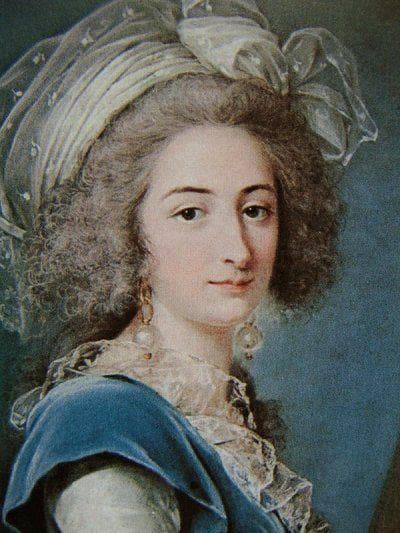
Portrait of Maddalena Laura Sirman (artist unknown)
Maddalena Laura Lombardini was born in 1745 in Venice.
As a girl, she studied at the music school at the San Lazzaro dei Mendicanti. While there, she showed special musical promise and went to Padua, Italy, to study with Giuseppe Tartini (composer of the famous Devil’s Trill sonata).
She graduated in 1767 and married violinist Ludovico Sirmen that same year. The two performed together and co-wrote music, including a double violin concerto that sadly has not survived.
In the late 1760s, when she was in her early twenties, she published her six violin concertos. Leopold Mozart, Wolfgang’s father, praised the first, calling it “beautifully written.”
She became one of the first composers to write string quartets, publishing a collection in 1769, shortly after Haydn’s early efforts in the genre.
In the 1770s, she began appearing as a singer, but her singing was not as successful as her violin playing had been.
As tastes changed, her violin-playing eventually came to be seen as too “old-fashioned.” She died in 1818, having lost much of her net worth after Napoleon’s invasion of Italy.
Teresa Milanollo (1827–1904)
Teresa Milanollo was born in 1827 in Savigliano, Italy, to a violin maker and his wife. When she was four, she heard a violinist play at church and demanded to be taught.
Initially, she took lessons locally, then moved to Turin for further studies when she was eight. By nine, she was studying in Paris in between extensive concert tours.
In 1838, she began teaching her younger six-year-old sister Maria how to play the violin. The two would become frequent performance partners.
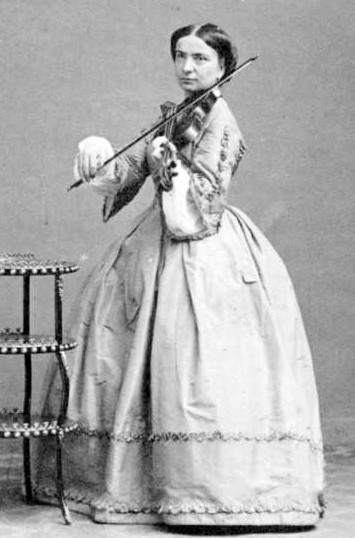
Teresa Milanollo
Before the Milanollo sisters began touring Europe, the violin was widely seen as an instrument unsuitable for women. The charming sisters changed that.
Audiences weren’t the only people impressed; so were critics and composers. Berlioz wrote a glowing review of Teresa in 1841. A few weeks later, she performed for Chopin. The following year, they played with Liszt before royalty.
The Milanollos continued their triumphant tours until the summer of 1848, when sixteen-year-old Maria became sick with tuberculosis. She died that October.
After the death of her sister, a devastated Teresa began playing only for the benefit of charity. She would hold one concert for a paying audience, then hold an identical one for impoverished schoolchildren and their families, and distribute the money she’d just earned.
On 16 April 1857, she gave her farewell performance. Hours later, she married a military engineer named Theodore Parmentier. She followed societal custom and retired from the stage after her wedding, although she continued to play privately and occasionally performed for charity or at home.
She died in 1904.
Wilhelmina Norman-Neruda (1839–1911)
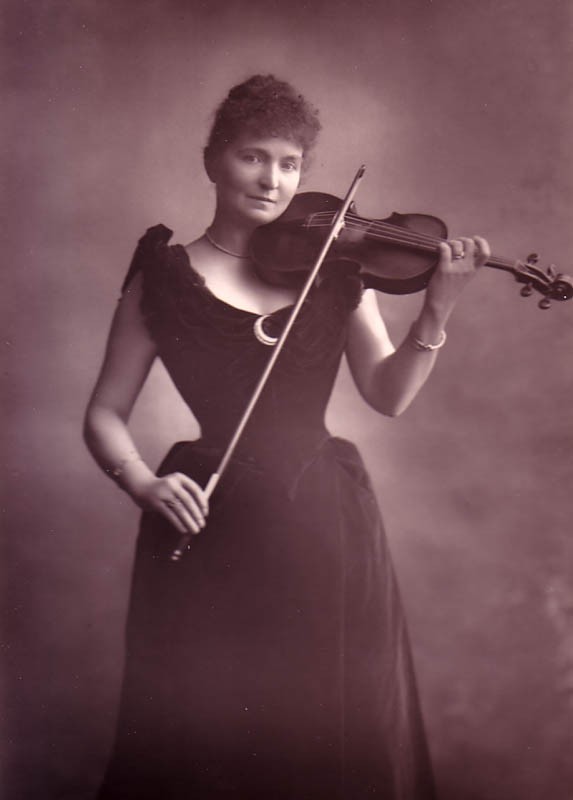
Wilhelmina Norman-Neruda
Wilhelmina Neruda was born in Brno, Moravia, to the organist at Brno Cathedral and his wife, who had several children who went on to become child prodigies. Wilhelmina would become the most famous of all of them.
Her father initially wanted her to play piano, but when she was a child, he caught her playing her brother’s violin. She was so naturally talented that he permitted her to continue.
The family moved to Vienna, and she began studying with Leopold Jansa. Wilhelmina gave her first public performance at seven. She and her talented siblings later began touring Europe to acclaim.
In 1864, when she was thirty-three, she married composer Ludvig Norman. She had two sons with him before the marriage deteriorated, and they separated.
Norman died in 1885, and three years later, Wilhelmina married renowned conductor and pianist Charles Hallé. When he was knighted, she became known as Lady Hallé.
Wilhelmina became famous across Europe, but especially in her adopted homeland of Great Britain. Sir Arthur Conan Doyle famously had Sherlock Holmes attend one of her concerts in the 1887 novel A Study in Scarlet.
She especially enjoyed performing chamber music and gave many incredible performances. These were striking at the time because she was one of the first women players to publicly perform chamber music with men in integrated ensembles. This would eventually help pave the way for women to play in orchestras with men.
She was widowed for a second time in 1895, and in 1898, her son was killed in a mountaineering accident. She retired from the concert stage the following year and moved to Berlin to focus on teaching.
She died in 1911.
Camilla Urso (1840–1902)
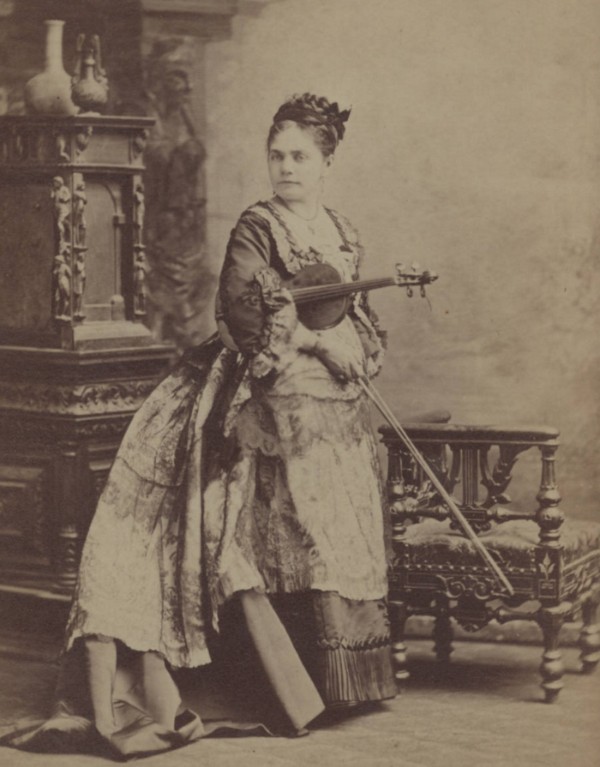
Camilla Urso
Camilla Urso was born in Nantes, France, in 1840, to an Italian flute player and his French singer wife.
Like Wilhelmina Norman-Neruda, she first heard the violin in church when she was a little girl and begged her father for lessons. She began playing the violin when she was six years old, and began playing for hours a day.
She enrolled at the Paris Conservatoire in 1849, the month she turned nine. (Rossini was on her audition panel.) She became the first woman violinist allowed to study there and graduated in 1852.
Later that year, she and her family sailed to New York, where she began touring America. During this decade, while Wilhelmina Norman-Neruda was inspiring European girls to take up the violin, Camilla Urso was doing the same in America.
In the mid-1860s, she returned to Europe to tour. Over the following decades, she would appear on four continents: North America, Europe, Australia, and Africa.
After fifty years of concertizing, she retired from the stage and began focusing on teaching. She died in 1902.
Maud Powell (1867–1920)
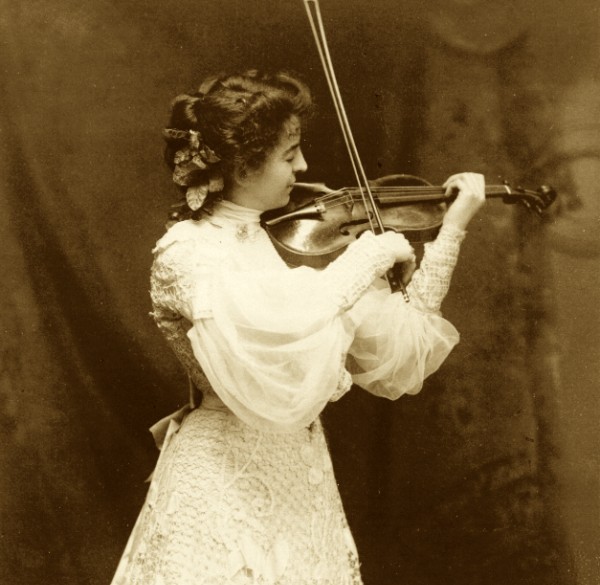
Maud Powell
Maud Powell was born in 1867 in Peru, Illinois, a small town a hundred miles southwest of Chicago. She began taking violin and piano lessons when she was seven years old. Her talent quickly became obvious.
When she was thirteen, her parents sold their house to fund studies in Europe. While there, she studied with Henry Schradieck in Leipzig, Charles Dancla in Paris, and Joseph Joachim in Berlin.
She made her Berlin Philharmonic debut in 1885, at the age of eighteen. It was the beginning of a major career.
Powell became the first great American violinist, male or female. Her legacy lives on in three important ways.
First, she used her fame to spotlight contemporary composers. She gave the American premieres of the Sibelius, Tchaikovsky, and Dvořák violin concertos, all of which have since entered the permanent repertoire. She was also a strong advocate for the work of American women and Black composers.
Second, she was also on the cutting edge of recording technology, making dozens of recordings between 1904 and 1919, the year before her death.
Third, during her American tours, she made a point to stop in dozens of tiny towns in between her big city appearances, sparking interest and curiosity about classical music across America.
Her intense workload was presumably one of the triggers of a fatal 1920 heart attack, which happened immediately after playing her transcription of the Black spiritual “Nobody Knows the Trouble I See.” She collapsed onstage and died.
Marie Hall (1884–1956)
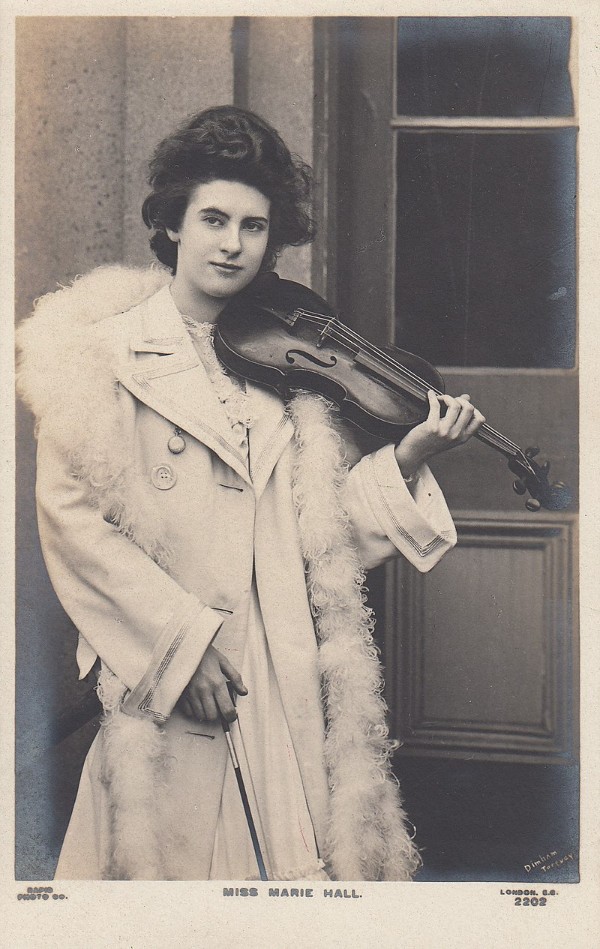
Marie Hall
Marie Hall was born in 1884 in Newcastle upon Tyne, England. Her father, a harpist with a touring opera company, was her first teacher.
The family had very little money, and despite her extraordinary natural talent, her training was intermittent. She studied violin with composer Edward Elgar in 1894, August Wilhelmj in 1896, and Johann Kruse in 1900.
In 1901, at the age of seventeen, she finally found funding to pay for studies with Otakar Ševčík in Prague, one of the best-known teachers of the era.
She made her London debut in 1901 with a staggeringly difficult program: Paganini’s first concerto, Tchaikovsky’s violin concerto, and Wieniawski’s Fantasy on Themes from Faust.
She would go on to perform in Europe, North America, Australia, and Asia.
She also made a number of wonderful recordings, including, in 1916, the first recording of excerpts from the Elgar violin concerto, with the composer conducting from the podium. She performed in a cone with the orchestra behind her.
Ralph Vaughan Williams dedicated his famous showpiece, The Lark Ascending, to her. She played the premiere of the violin and piano version in 1920 and the violin and orchestra version in 1921.
In 1911, she married her manager and had one child, a daughter. She died in 1956.
Ginette Neveu (1919–1949)
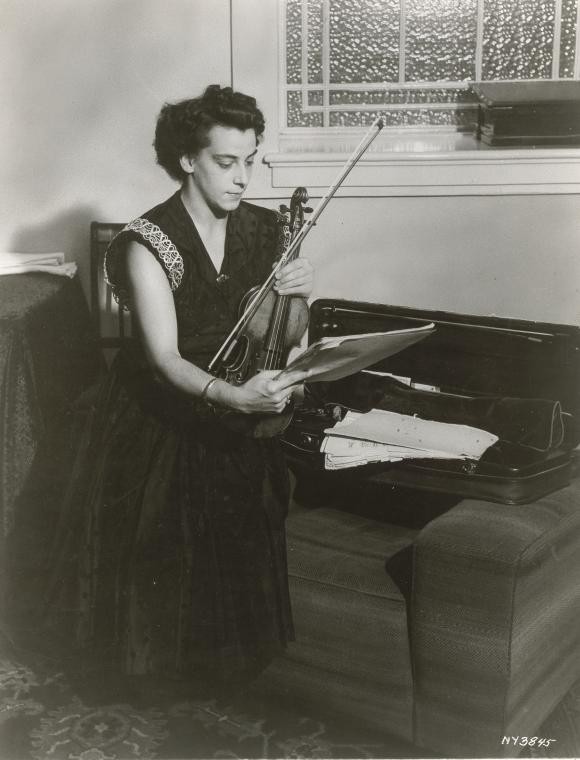
Ginette Neveu
Ginette Neveu was born in Paris in 1919. She was the grand-niece of composer Charles-Marie Widor.
She was an astonishingly talented little girl who made her debut in Paris at the age of seven, playing the Bruch concerto.
She went to study at the Paris Conservatoire and studied with Nadia Boulanger, George Enescu, and Carl Flesch. She was so talented that Flesch gave her lessons free of charge.
In 1935, when she was fifteen, she won the Henryk Wieniawski Violin Competition. (Legendary violinist David Oistrakh, twenty-seven, placed second.) The win catapulted her to the forefront of the classical music world.
After World War II ended, she began making her major international debut. She and her accompanist brother embarked on a series of performances across Europe, North America, and South America.
Tragically, both Neveus died in a plane crash in 1949, flying between Paris and New York.
Her early death robbed the classical music world of one of its brightest stars. She had fewer opportunities to record than other violinists who lived longer, but the recordings she left behind are deeply beloved.
Kyung-Wha Chung (1948–)
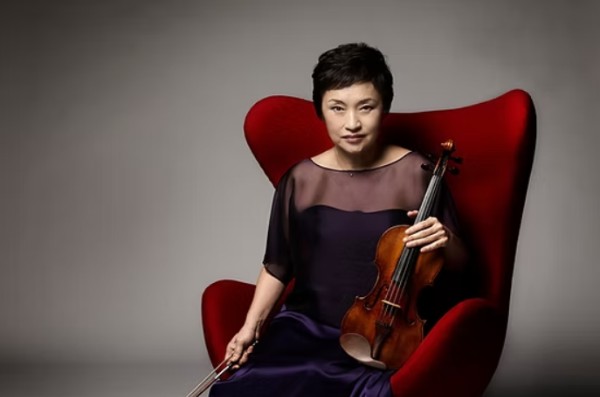
Kyung-Wha Chung
Kyung Wha Chung was born in Seoul in 1948. She began playing piano at four and violin at seven. At nine, she made her debut in the Mendelssohn violin concerto with the Seoul Philharmonic.
Her six siblings all played musical instruments, and when she was thirteen, the family moved to the United States to further their educations. She began studying at Juilliard under Ivan Galamian.
In 1967, when she was nineteen, she, along with Pinchas Zukerman, won the prestigious Leventritt Competition, which helped launch both of their respective careers.
Three years later, she stepped in as a replacement for Itzhak Perlman in London. The performance was so sensational that she was immediately hired to make a recording of the Tchaikovsky and Sibelius violin concertos with the orchestra.
In 2008, she withdrew from the concert platform due to injury and poor health, but returned to the stage in 2014.
In 2016, she made her first recording in fifteen years: a recording of the six sonatas and partitas for solo violin by Bach, widely considered to be the Mount Everest of the repertoire.
Anne-Sophie Mutter (1963–)
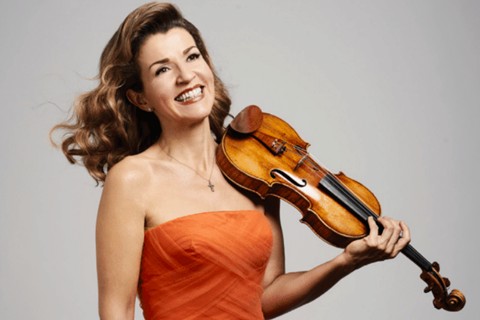
Anne-Sophie Mutter
Anne-Sophie Mutter was born in the town of Rheinfelden, Germany, on the border between Germany and Switzerland, in 1963. Her family was not musical, but loved classical music.
She began studying the piano when she was five, but soon switched over to the violin after hearing a recording of the Mendelssohn and Beethoven concertos. She gave her first public concert in 1972, when she was nine.
When she was thirteen, Herbert von Karajan, legendary conductor of the Berlin Philharmonic, heard her playing and became her mentor. She made her first recording of two Mozart concertos when she was just fifteen.
She made her American debut with the New York Philharmonic in 1980, kicking off a decade of touring and recording.
Starting in the 1990s, she became increasingly interested in contemporary music. Over the ensuing decades, a number of composers have written concertos and other works for her.
She has earned a reputation as someone interested in ambitious projects. For instance, in 1998, she spent an entire year playing and touring the Beethoven violin sonatas. Later, to observe the 250th anniversary of Mozart’s birth in 2006, she toured performing all of the concertos.
In addition to her musical activities, she has also played benefit concerts to support charitable causes, from famine relief to Holocaust awareness, among many others. In 2021, she was elected President of German Cancer Aid.
Hilary Hahn (1979–)
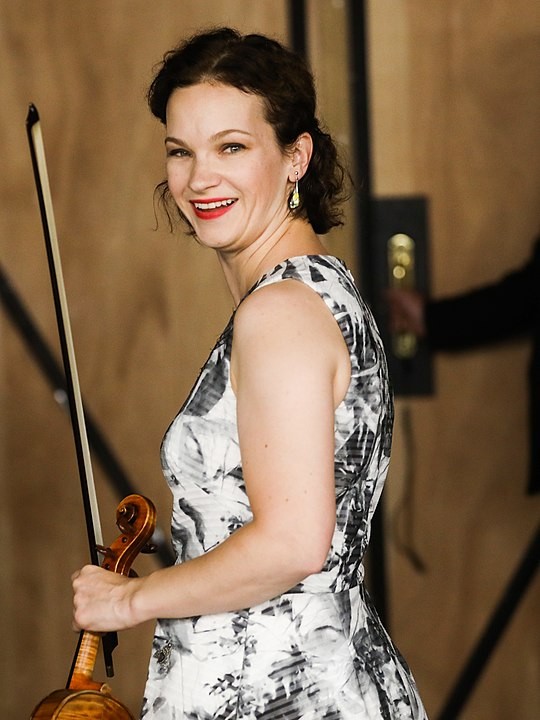
Hilary Hahn
Hilary Hahn was born in 1979 in Virginia and grew up in Baltimore. She began playing the violin in a Suzuki program there when she was three years old.
When she was ten, she began studying at the Curtis Institute of Music in Philadelphia with Jascha Brodsky. At the time, Brodsky was eighty-three years old and a former student of Eugene Ysaye, who had himself been born in 1858. This training gave her unique direct insight into musical ideas from the early twentieth century.
She made her American orchestral debut with the Baltimore Symphony Orchestra in 1991 and her European debut in Hungary in 1994. Her debut recording was made when she was just sixteen: one of the finest recordings ever of three solo works by Bach. She graduated from Curtis with her bachelor’s degree in 1999 at the age of twenty, but by that time her international career was already in full swing.
Over the past two and a half decades, she has demonstrated a flawless technique and an intellectually probing musical curiosity. She has proven to be one of the greatest violinists alive, male or female.
No comments:
Post a Comment